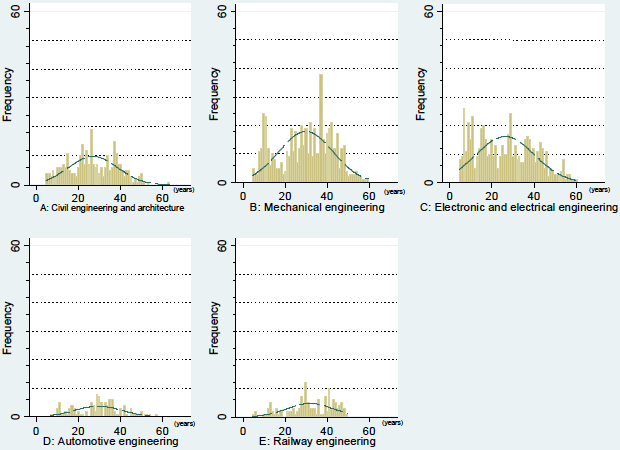Studies of computer keyboards are well known among research concerning the lifespan of standardized technologies. The use of the universal "QWERTY" key arrangement has continued for a very long period. Despite the fact that there might be more efficient keyboard layouts, they have not come into use, while the QWERTY arrangement continues to be used. This example suggests the simple question "What is the lifespan of a technology that becomes a standard?" This question in turn leads us to ask "What type of system would be most desirable for managing the lifespan of technological standards?"
Types of technological standards and their characteristics
Technological standards can be divided into de facto standards emerging from the market and officially formulated de jure standards. Operating systems (OS) present an example of de facto standards. The Android OS and the iOS that are used on smartphones are de facto standards. Standards formulated under the aegis of the Japanese Industrial Standards (JIS) and similar categories are examples of de jure standards. When considering the lifespan of technological standards, it is essential to know both the period of inception of the standard, and when the standard was scrapped or fell out of use. In the case of de facto standards, which are determined by the market, it is difficult to establish criteria enabling how to judge precisely when the standard was formed. Because they are formulated in accordance with specified procedures, meaning that a record of the process is retained, de jure standards offer a more favorable case in terms of measuring the lifespan of standards. The literature provides an example of research on the periods of formation and obsolescence of de facto standards that looks at products of the information and communications technology (ICT) industry and measures the lifespans of standards based on the criterion that a de facto standard is formed when a product achieves a market share of around 3% [1]. The measurement method employed in this research shows that the lifespan of the standard represented by Sony Computer Entertainment, Inc.'s PlayStation, a home games console, was four years. In this case also, however, it was difficult to specify when the standard fell out of use. The fact that we cannot clearly specify the point of formation and the point of obsolescence of de facto standards, but, at some point, simply recognize an already formed standard, which is already giving way to another standard when it is recognized, is an impediment to deepening our understanding of the duration of technological standards.
Lifespan of technological standards and implications
I conducted an analysis of the lifespans of the de jure Japanese Industrial Standards (JIS) standards. The figure below shows the results of a study of the distribution of the lifespans of standards that JIS records indicate as being scrapped, for each of 19 categories [2].

As was predicted, the distribution of the lifespan or duration of standards varies for different technological fields. While the effect of the type of standard and the industrial structure of the industries using the standards can be considered as reasons for this, the general impression obtained from the study was that formulating new technological standards is essential in technological domains that progress through radical rather than incremental innovation, because technological continuity is not maintained in these areas. As an a priori hypothesis, it was considered that the shorter the lifespan of technological standards in a specific technological domain, the greater the regularity of radical innovation in that domain.
This result offers important suggestions for the process of managing technological standards that embody innovation. At present, JIS standards are revised every five years. This involves enormous costs, for example, in relation to the collection of opinions from interested parties. The desire to postpone revising the standards that have been used for an extended period, enabling the associated costs to be reduced, is only natural. At the same time, in technological domains in which the lifespans of standards are short, it would be a highly significant initiative to reduce the period of reconsidering the standards, enabling technological standards to respond to market needs and technological change. This systemic change could form part of the reform of the national system for promoting innovation. Studies of the process of formulating technological standards have tended to focus on the time required for their formulation and the actions of the parties concerned; analysis of the appropriateness of the period for reconsidering the standards following their formation would represent a new perspective. This would offer a comparative contrast to studies of the appropriateness of the period of validity of intellectual property rights such as patents.
Conclusion
As has been shown above, given the increased importance of de jure technological standards and the demand for a more rapid formulation of such standards in advanced fields, setting periods to reconsider standards that enable response to actual circumstances can be considered promising as a systemic change that would contribute to reforming the system for promoting innovation throughout Japan as a whole. At the same time, the ongoing study of the definition of the lifespan of market-based de facto standards and of methods of measuring their lifespans will continue to be important.


